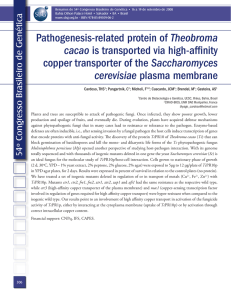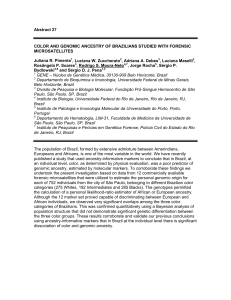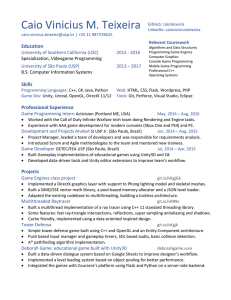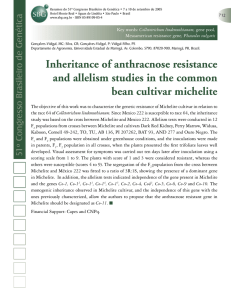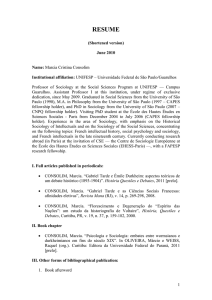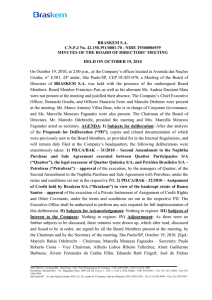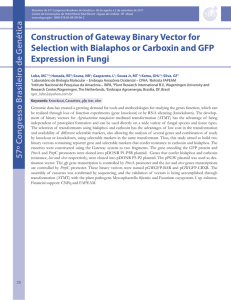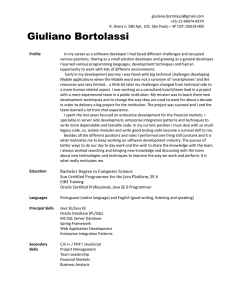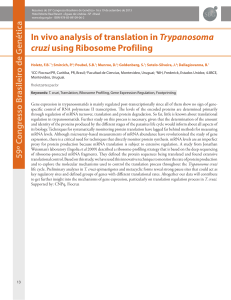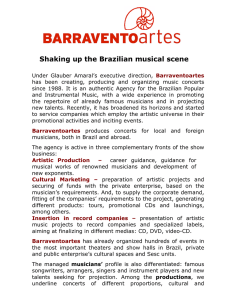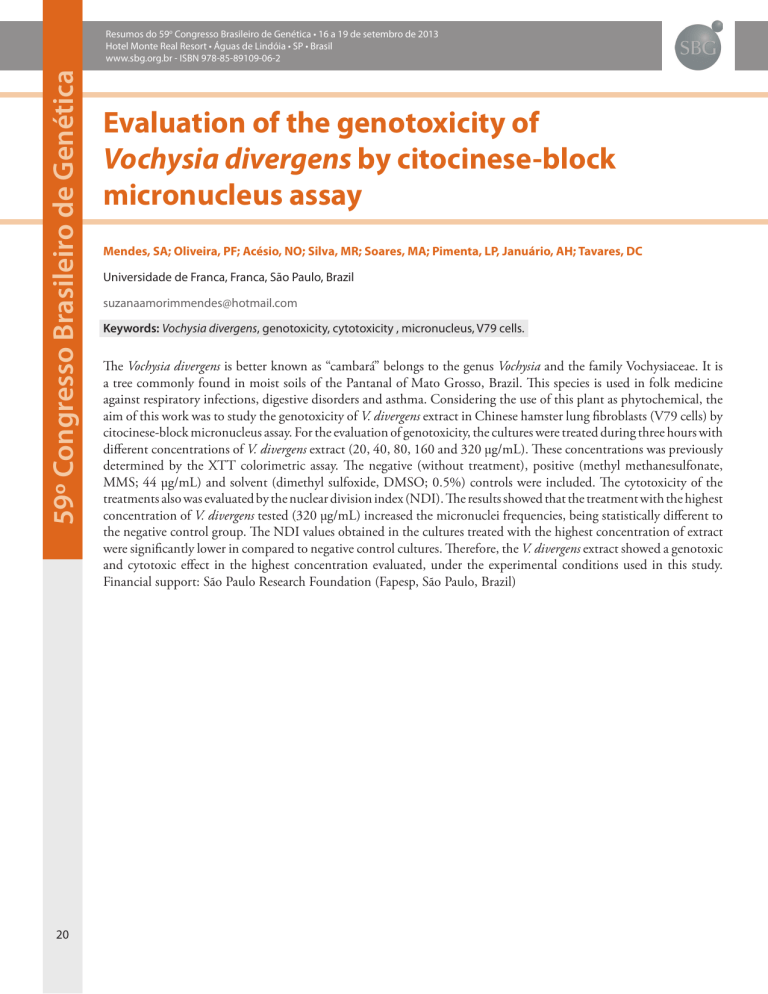
59º Congresso Brasileiro de Genética
Resumos do 59o Congresso Brasileiro de Genética • 16 a 19 de setembro de 2013
Hotel Monte Real Resort • Águas de Lindóia • SP • Brasil
www.sbg.org.br - ISBN 978-85-89109-06-2
20
Evaluation of the genotoxicity of
Vochysia divergens by citocinese-block
micronucleus assay
Mendes, SA; Oliveira, PF; Acésio, NO; Silva, MR; Soares, MA; Pimenta, LP, Januário, AH; Tavares, DC
Universidade de Franca, Franca, São Paulo, Brazil
[email protected]
Keywords: Vochysia divergens, genotoxicity, cytotoxicity , micronucleus, V79 cells.
The Vochysia divergens is better known as “cambará” belongs to the genus Vochysia and the family Vochysiaceae. It is
a tree commonly found in moist soils of the Pantanal of Mato Grosso, Brazil. This species is used in folk medicine
against respiratory infections, digestive disorders and asthma. Considering the use of this plant as phytochemical, the
aim of this work was to study the genotoxicity of V. divergens extract in Chinese hamster lung fibroblasts (V79 cells) by
citocinese-block micronucleus assay. For the evaluation of genotoxicity, the cultures were treated during three hours with
different concentrations of V. divergens extract (20, 40, 80, 160 and 320 µg/mL). These concentrations was previously
determined by the XTT colorimetric assay. The negative (without treatment), positive (methyl methanesulfonate,
MMS; 44 µg/mL) and solvent (dimethyl sulfoxide, DMSO; 0.5%) controls were included. The cytotoxicity of the
treatments also was evaluated by the nuclear division index (NDI). The results showed that the treatment with the highest
concentration of V. divergens tested (320 µg/mL) increased the micronuclei frequencies, being statistically different to
the negative control group. The NDI values obtained in the cultures treated with the highest concentration of extract
were significantly lower in compared to negative control cultures. Therefore, the V. divergens extract showed a genotoxic
and cytotoxic effect in the highest concentration evaluated, under the experimental conditions used in this study.
Financial support: São Paulo Research Foundation (Fapesp, São Paulo, Brazil)


